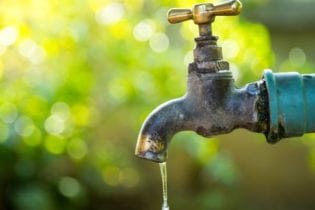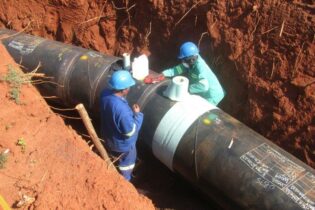Leveraging the abundance of groundwater, the Coca-Cola Beverages South Africa (CCBSA) Coke Ville Groundwater Harvesting Programme is making strong headway in the Eastern Cape to help fight the looming water crisis facing South Africa.
New solar-powered water harvesting and treatment systems in Kwazangashe Village in Ngcobo and Shiloh Village in Whittlesea, bring the number to four in the Eastern Cape alone, with the first two being in Dala and Daberha villages in Ngcobo, as well in Bolotwa, located near Queenstown, in early 2021. The total number of projects under Coke Ville are now 11 sites across the country. Altogether, these projects are poised to deliver 80 million litres of water to 12 000 households in the Eastern Cape, Kwa-Zulu Natal, Limpopo Province and Gauteng. “The Eastern Cape is one of the most water-stressed regions in the country, struggling with a combination of drought that has persisted since 2015, ageing water infrastructure and many communities that remain unconnected to the water grid,” says Nozicelo Ngcobo, Public Affairs, Communication and Sustainability Director at CCBSA. “The enormous untapped resource of groundwater offers an affordable, easily deployed solution that can effectively satisfy the demand of a fast-growing population while easing the burden on the system. Not only does this mean clean water and a better health outcome for citizens, but it also allows municipalities the opportunity to conduct maintenance and upgrades to existing infrastructure, while expanding coverage to more communities.” According to the Department of Water and Sanitation (DWS), only 64% of households in the country have access to a reliable water supply service. Approximately 11% of wastewater treatment and water treatment works are completely dysfunctional, while 56% of wastewater treatment works and 44% of water treatment works are in poor condition.South Africans continue to depend mostly on surface water for their water needs. The challenge is that surface water is the primary resource into piped municipal water suppliers, and it is overstretched and prone to pollution, drought, and system failure.
The country expects to reach physical water scarcity by 2025, accelerating to 17% water scarcity by 2030, based on current usage and population growth. The Government’s current long-term water resource plan is based on moving the country to alternative sources, and includes reusing and recycling grey water, rainwater harvesting and groundwater. Of the available resources, groundwater has the best potential to support a fast-growing population. The government estimates that South Africa has the same amount of groundwater as surface water and with groundwater usage increasing only marginally each year per year, less than half of South Africa’s water needs come from groundwater. “As a beverage producer and industrial water consumer, it is our duty to ensure the long-term sustainability of available water resources,” Ngcobo says. “This includes leading the innovation of alternative water systems and efficient use of water through treatment and recycling in our operations. With groundwater typically being cleaner than surface water, it is easier to treat and can also be deployed much faster in areas where an accessible source is identified, reducing the cost of transmission with shorter pipelines and simpler maintenance.”






